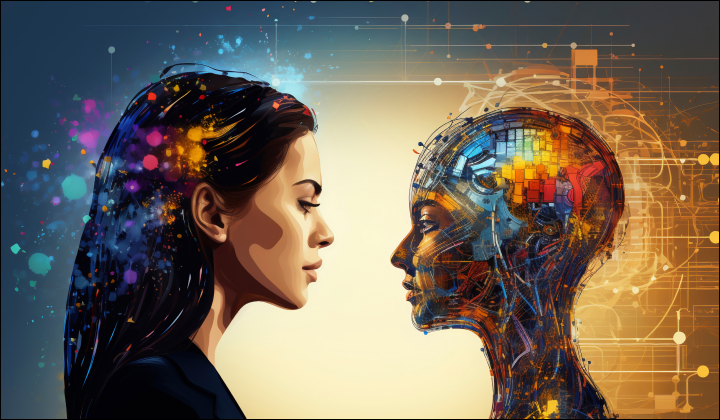Artificial Intelligence (AI) generally refers to machine intelligence that is initially programmed by people but can be augmented with its own cognitive capabilities. An ‘AI in HCM’ framework that I published a few years ago included these five categories of use cases based on hundreds that I reviewed: Personalize, Predict, Prescribe, Understand, and Curate.
GenAI in HCM: Industry Update and Value Realization Checklist

1. AI
2. GenAI or AI 2.0
Generative AI (GenAI or AI 2.0) employs machine learning techniques to autonomously generate content based on input prompts and probabilistic model parameters “learned”, ideally using significant amounts of training data. This includes text, images, audio, and more.
For an exploration of ‘GenAI in HCM’ capabilities and considerations, here’s my recent blog on this topic published by Azilen Technologies:👉 Generative AI in HCM: Innovation and the Double-Edged Sword
And this is another of my blogs, one that addresses key cautions and mitigations around ‘AI in HCM’, also Azilen-sponsored: 👉 Generative AI in HCM: Use Cases, Cautions and Mitigations
3. LLMs
Large Language Models (LLMs) are a subset of Gen AI models pre-trained on massive datasets which then enable them to understand both broad and specific contexts around a subject. They are used for a range of natural language processing tasks such as language translation, interacting with chatbots, content summarization, etc.
4. GPT
Generative Pre-trained Transformer (or GPT) is a newer class of natural language processing (NLP) models developed by OpenAI and designed to understand and generate human-like text based on input received. GPTs need three core elements to generate good-quality results: A clear objective, solid contextual info that guides, and a prescribed or desired format.
5. ChatGPT
ChatGPT, developed by OpenAI and launched in November 2022, was the first well-known LLM offering the ability to achieve general-purpose language understanding and language or content generation. ChatGPT’s capabilities were somewhat limited due to the data set not being refreshed after 2021.
6. GPT-4
GPT-4, launched in July 2023 was the next iteration of OpenAI’s GPT engine using a tool called Visual ChatGPT. This allows such additional capabilities as deleting or replacing an object in pictures, or even describing a picture’s contents in simple English.
OpenAI Powered Innovation
Innovation from the ground-breaking firm OpenAI continued in earnest just four months later in November 2023 with the availability of “GPTs”, designed to let anyone technically savvy create custom GPT models.
Moreover, GPTs coupled with a GPT Builder, now allow even the less technically skilled to also create GPT models.
This resulted in Twitter enthusiasts within the first ten days of availability displaying (for free) dozens of their highly creative GPT creations.
Striking ones for me personally included a GPT that purportedly enables the creation of a professional website from “starter specs” in just 60 seconds; one that serves as a writing coach that reads your work and gives you feedback to improve writing skills; and another that concisely summarizes docs using just one or two sentences.
In recent months, HR Tech vendor updates (at several analyst forums I’ve attended) have routinely been featuring use case examples of GenAI capabilities already developed and/or near-term available.
In fact, one HCM vendor shared their list of impactful GenAI use cases crafted at least initially for their own internal use! Some of the items on their impressive list were internal knowledge base extraction, market research, and industry content summarization, unstructured text and data analysis, training of new hires, support desk case summarization and classification, and contract reviews.
The Cloud HCM vendor segment overall has been steadily providing insights into how their ‘AI in HCM’ capabilities have continued to evolve, with outcomes like employee schedule optimization, sentiment analysis, iterations of candidate matching and flight risk prediction, document management and classification, employee metadata extraction, more sophisticated nudges, and team-based insights.
The GenAI Value Realization Checklist for HR Leaders
- Developing and syndicating well-conceived GenAI guiding principles
- Giving appropriate attention to the front end of change management, namely, a multi-dimensional assessment of organizational readiness, e.g., skills, attitude, potential distractions or impediments, data, and content thoroughness and reliability, etc
- Assessing AI maturity level and usage in the organization, including governance policies
- Evaluating and optimizing the GenAI use case prioritization methodology
- Evaluating and optimizing the approach for connecting AI models to AI data sources
- Understanding and executing on necessary staff redeployments and reskilling
Final Thoughts
If any of us thought that the ‘AI in HCM’ arena in HR Technology was a reasonably fast-moving train, the GenAI in HCM domain by comparison has basically been like a rocket ship.
And while the newest source of GenAI excitement (GPTs) show a very near future involving the ability to connect to other products and services – thereby enabling a wide range of tasks and activities previously reserved for humans, there are a variety of cautions and risk mitigation steps that cannot be ignored.
Some of the key ones have been explored here.
Finally, and at the risk of stating the obvious, given the highly fluid nature of progress and considerations permeating GenAI in HCM / HR Technology, this author’s recommendation is that any development team building GenAI-powered apps and connectors must clearly demonstrate to their internal/external users and clients that:
(1) They not only stay abreast of how the technology keeps evolving in their constant training efforts, and
(2) They are adept at balancing all the justifiable excitement with all the risks, realities, and tradeoffs of the GenAI era.



 11 mins
11 mins









 Talk to Our
Consultants
Talk to Our
Consultants Chat with
Our Experts
Chat with
Our Experts Write us
an Email
Write us
an Email





